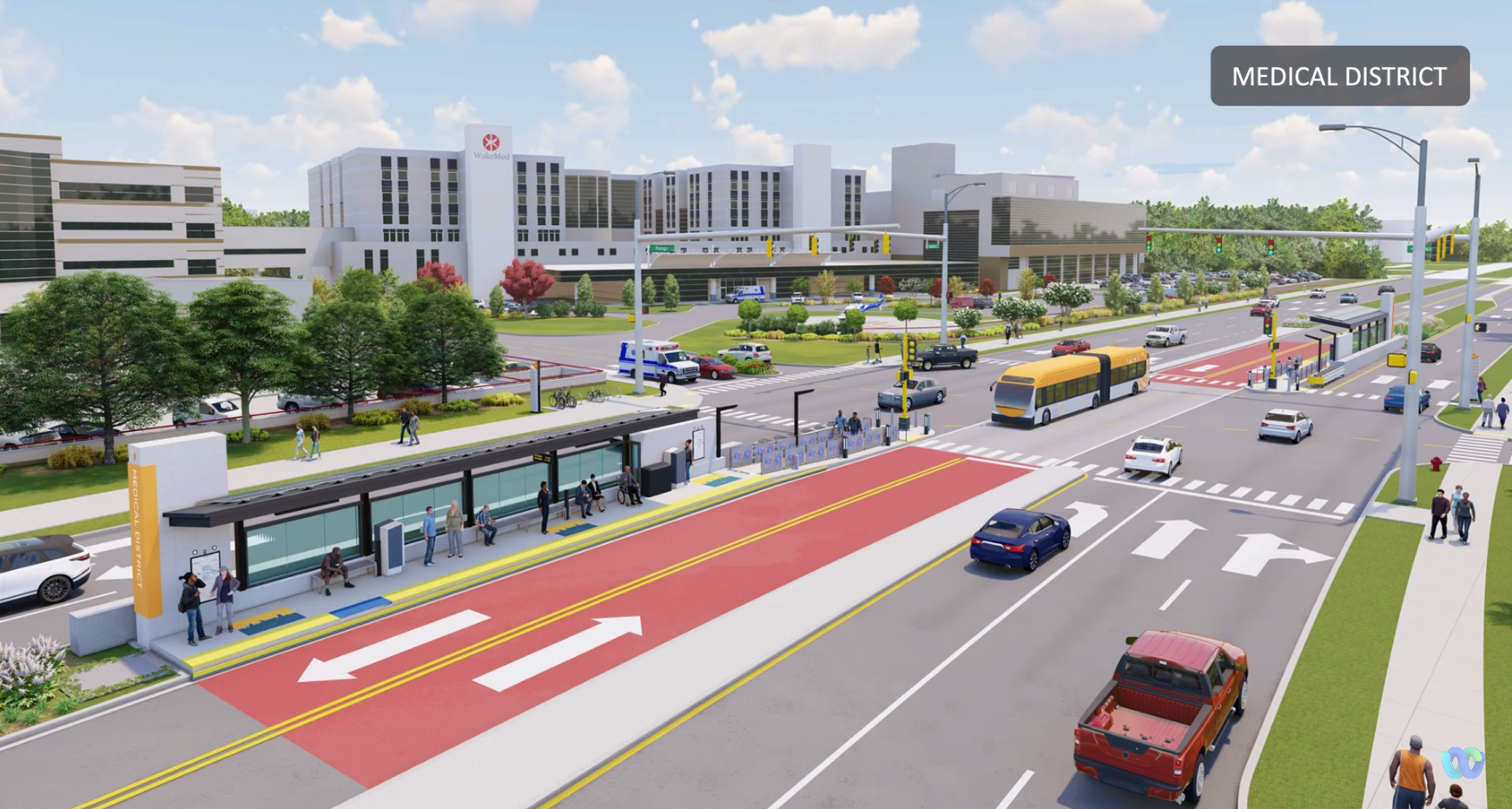The Center for Urban and Regional Analysis at Ohio State University conducted a study in 2022 to understand the impact of bus rapid transit (BRT) systems on residential property values in the United States. BRT as a mode of public transit is less than two decades old, so this is the first comprehensive study of it. The study compared 11 different BRT systems in cities across the country. The main goal of the study was to determine if BRT systems had a positive, negative, or neutral effect on the value of nearby homes.

There are two theories that are often circulated about BRT in the Triangle. One is that it will drive up single family home prices and push legacy residents out through gentrification. The other is that it will reduce single family home prices in wealthier neighborhoods. Based on this research, neither theory is accurate.
The results of the study showed that, on average, single family homes near BRT stations saw a negligible effect on property values. The change in value was typically between 2% and 5% per quarter-mile distance from BRT stations. Which is lower than the current housing market increases in areas where BRT is proposed in Raleigh.

In fact, in the last five years, the median single family home price increased by 75% in the Raleigh-Cary Metropolitan Statistical Area (MSA), according to data from the Federal Reserve. This home price increase hasn’t been localized to Raleigh either. While the data from the OSU study cannot say definitively what will happen along Wake County corridors, it can be assumed that the transit projects are not likely to contribute in a significant way to the change.
However, the study also found that the value for multi-family homes, which in Raleigh would be allowed under the Transit Overlay District rules, on average saw an increase in value. In the case of Cleveland multifamily housing experienced a 40% increase. It is unlikely Raleigh will see the same effect, but based upon the data, more density built developments will probably see some increase in value.

Raleigh City Council has approved policies to diversify housing types and increased density along the Western Avenue and South Wilmington Street BRT corridors. In the coming months Council will be asked to approve more density options for the New Bern Avenue corridor which would allow duplexes to 3-5 story developments with height bonuses for more affordability. Based upon the study data, developers may be more inclined to build more density if there is a possibility of a higher property value then there is for developing large single family homes.
If builders are more willing to develop density right along the corridor, this would be positive in a few ways for the region. It could help BRT be more successful as density is needed for high-frequency transit lines to operate the way intended. It is also possible that the density could create a small relief valve to the runaway single family home prices and the correlated property tax increases. Lastly, more density, especially with the way the City of Raleigh has adopted the Equitable Development Around Transit plan, could mean more affordable options for residents that need it.
A ‘bonus’ feature of more interest in denser development around the New Bern Avenue corridor is that there is speculation that the Federal Transit Administration will include some requirements for zoning changes around transit corridors in order to receive federal funding. With Raleigh already making policy shifts in this area and possible market interest in developing more gentle density or small multifamily housing like duplexes, quadplexes, townhomes, and small, few unit apartments (as opposed to large 20-story buildings), our region could benefit from increased federal assistance for the proposed projects.
The study concluded that the presence of a BRT system can have a positive impact on adjacent communities. The overall results were mixed, but where Single Family Home values are most affected were Cleveland and Pittsburgh where density and investment around the transit system was slow to be implemented and service suffered.
Improved accessibility and convenience that BRT systems provide with intentional development surrounding station areas show up in a minor, but still positive impact in property values. Homes near BRT stations are more accessible to jobs, shopping, and other amenities, which can have a positive effect on resident’s quality of life and overall costs of living.
It is important to note that the results of this study are specific to the cities studied and may not be applicable to all BRT systems in the United States or Raleigh specifically. However, the study provides a valuable perspective as the Triangle considers and implements BRT to connect our communities.
We can tell a lot from this study, but how we plan for the continued growth we have experienced for the past decade and make sure that legacy residents are included in our future plans is up to the choices we make as communities. In fact, it is those choices that will decide the eventual impacts on property values and the success of our transit investments.
Molly Stuart, a land use attorney with Morningstar Law Group and a WakeUP board member, will discuss the study and the policy implications for the Triangle at the March 1st Transportation, Land Use, & Housing Committee meeting at 3pm on Zoom (link). A recording of the meeting will be available on the organization’s Youtube channel.


